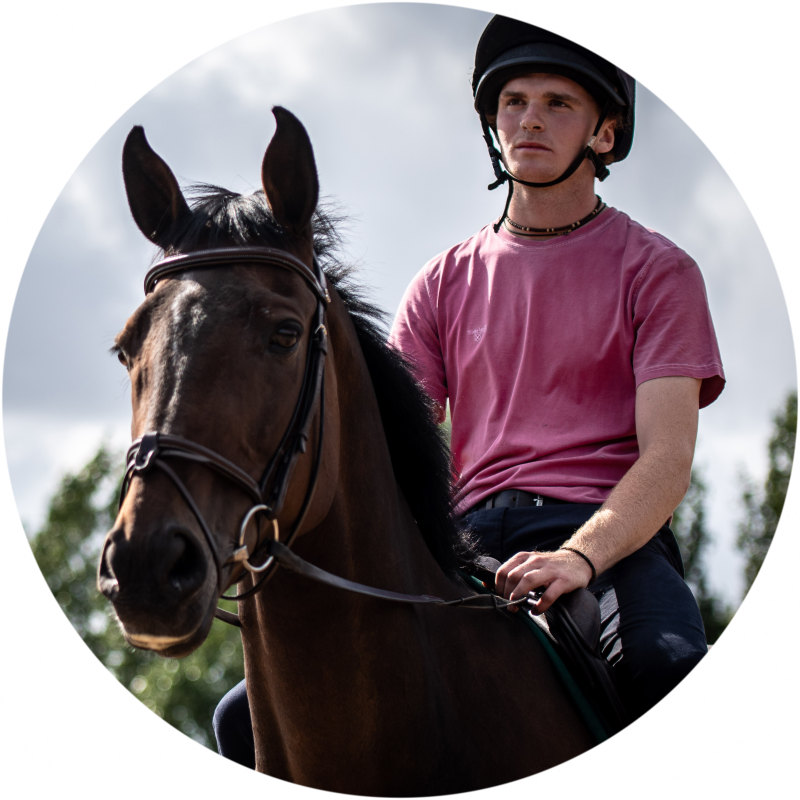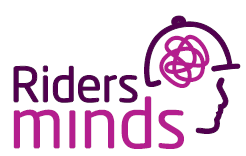
WHAT IS BULLYING?
Sadly, bullying occurs in many ways and in many environments. Equestrianism is no exception with anecdotally high incidences of bullying, actual reports and industry respected research.
Under the UK Equality Act 2010, harassment is against the law, but bullying is not.
So what IS bullying then when there’s no legal definition, making it often hard to prove, and when it can then be a matter of perception? For example, when does firm guidance, instruction, direction or correction become bullying?
There are various definitions. The Anti-Bullying Alliance [‘ABA’] defines bullying as: “The repetitive, intentional hurting of one person or group by another person or group, where the relationship involves an imbalance of power. Bullying can be physical, verbal or psychological. It can happen face-to-face or online.
The four key elements to this definition are: hurtful, repetitious, power imbalance, intentional.”

According to the ABA,
“Most bullying incidents are not crimes. But some types of bullying are illegal and should be reported to the police. This includes bullying that involves violence or assault; theft; harassment and intimidation over a period of time including calling someone names or threatening them, making abusive phone calls, and sending abusive emails, text messages, social media posts (one incident is not normally enough to get a conviction); and anything involving hate crimes.”
General consensus is bullying can be described as ‘unwanted behaviour from a person or group that is either:
- offensive, intimidating, malicious or insulting.
- an abuse or misuse of power that undermines, humiliates, or causes physical or emotional harm to someone.
General guidance is:
- If someone behaves and treats everyone the same, that’s not considered bullying.
- If someone singles out, behaves towards and treats another differently, that can be considered as bullying.

‘SOFT’ BULLYING
When people think of bullying, most think about the obvious and identifiable actions. However, there’s also ‘soft’ bullying. This involves subtle emotional and psychological manipulation that’s difficult to spot and, therefore, hard to prove especially when it happens over a long period of time. Again, it may be unintentional, yet can have the same impact.
Examples of subtle, ‘soft’ bullying’ are below, in combination rather than one in isolation.
Being set up to fail – setting impossible targets or changing expectations when a task is already started or nearing completion. Can also include purposely withholding information or omitting to provide necessary information.
Excluding – intentionally excluding an individual from group activities.
Finding fault – giving unwarranted, constant criticism of the individual, including their achievements and progress. This can either be on a one-to-one basis or by the bully making belittling comments about the individual in a group setting.
Flattery – being overly complimentary and flattering to someone with the intention to gain their trust. The bully’s goal is that the person will then lower their guard and be more receptive to further manipulative behaviour.
Ignoring – purposely avoiding or not paying attention to the individual. Will often include talking to those around them but deliberately not acknowledging or including the individual in that conversation.
Lying – being economical with the truth or lying, in order for the bully to get their own way.
Never knowing where you stand – the individual is unsure of where they stand due to the bully having frequent mood swings, changing emotions and behaviour.
Responsibility being taken away – or changing the individual’s role, with no reasonable reason being given.
WHAT IS CYBER BULLYING?
There is no legal definition of cyber bullying within UK law. However, there are a number of existing laws that can be applied to cases of online bullying and harassment.
More time spent online increases our exposure to cyberbullying. It can happen 24 hours a day, 7 days a week and can go viral very fast, and often spiral out of control.

General consensus is that cyber-bullying is: ‘any form of bullying which takes place online through the use of electronic media devices, such as computers, laptops, smartphones, tablets, or gaming consoles’.
Cyber bullying is on the increase and can have tragic effects. Some children even believe that cyber-bullying is not as serious as other forms of bullying, but that is not true.
Reporting cyber bullying on various online platforms and then getting any real action can be difficult. Many claim these processes are ineffective. There are various campaigns for better protections against potentially dangerous social media algorithms, censorship of graphic material and content, bullying and harassment.

What can cyber-bullying involve?
Actions such as :
Virtual mobbing or dog-piling: Encouraging other people to harass someone on social media.
Doxxing: Publishing someone’s personal information.
Trolling: Posting messages or comments online deliberately intended to upset others and/or provoke an angry response.
Baiting: Accusing someone of being involved in sexual activity.
Cyber-stalking: Repeated use of online messaging to frighten, threat, harm or harass, intimidate to purposely make a person afraid for their safety. The actions may be illegal too depending on what they are doing.
Spamming: Sending a large number of unwanted messages.
Flaming: Abusing someone in a live chat forum to purposely get them into online arguments and fights.
Harassment: sending offensive, insulting, abusive and nasty messages and/or humiliating comments on posts, photos and videos, in chat rooms or on gaming sites.
Denigration: sending information about another person that is fake, damaging and untrue. Sharing photos, often altered, of someone for the purpose to ridicule, spreading fake rumours and gossip.
Impersonation: hacking into someone’s email or social networking account and using the person’s online identity to send or post vicious or embarrassing material to/about others. Fake accounts might be created too to cause hurt and humiliation.
Outing and Trickery: sharing personal information about another or tricking someone into revealing secrets and forwarding to others. May also include private images and videos.
Exclusion: intentionally leaving someone out of a group such as group messages, online apps, gaming sites and other online engagement.
WHY BULLY?
There are many reasons why people bully including:
- Wanting to dominate and/or control others.
- Abuse of power or position.
- Improve their social status.
- Appear strong, confident, empowered. However often masks the opposite.
- Having low self-esteem and wanting to feel better about themselves.
- Having a lack of remorse or failing to recognise their behaviour as a problem.
- Learned behaviour.
- Enjoy rewards they get from bullying.
- Simply to be mean and nasty.
- In the case of online bullying, can ‘say’ things they wouldn’t say face to face.

‘UPWARD’ BULLYING
When people think of bullying, they generally think of it being downward. That is where someone higher up, with responsibility/authority, is powerful, older abuses their power and/or position, and bullies someone below them, eg younger, disadvantaged etc.
Upward bullying is less well-known. It’s where managers, leaders, teachers, an employer – those in authority – are bullied by those below them eg a member(s) of staff, pupil(s). It can be from one person, or a group.

Examples can be:
- Showing continued disrespect.
- Refusing to complete tasks.
- Talking behind their managers, employers, teachers back and/or spreading rumours.
- Doing things that make the manager, employer, teacher appear unskilled, or unable to do their job properly.
- Belittling their manager, employer, teacher in front of others.
- Withholding information to discredit, undermine.
BULLYING, OR ‘BAD’ BEHAVIOUR?
We should also understand that someone’s perceived bullying behaviour could be their response to them having an off day, a tough time, something’s going on for them, it’s their ‘normal way of being’, or whether it really is bullying behaviour.
![]() At Pony Club meets, Kit was being mean and nasty to everyone.
At Pony Club meets, Kit was being mean and nasty to everyone.
Kit’s coach noticed this and that others were starting to avoid Kit which was making things worse. The coach was mindful of bullying behaviours and potential safeguarding issues. When Kit’s behaviour continued, ie it wasn’t a one-off, the coach gently spoke to Kit sharing their observations and asked if Kit was OK.
Kit was initially defensive but, during their conversation, Kit shared they’d received some tragic news at home, and had been trying to deal with alone.
Kit had no idea the effect their behaviour was having on others, but had felt increasingly alone. The coach and Kit worked together so Kit got the support they needed.
Nicky changed departments at work and had a new boss. Nicky was struggling with this new demanding role, its workload, the change of environment including a management style that Nicky thought was aggressive. Nicky felt this new boss was a bully, especially when Nicky made mistakes.
Speaking with other team members, feedback was ‘oh, yeah, that’s how they are. That’s just their way. It’s not ideal, but they are the same with everyone’.
Nicky had some choices to make.
THE EFFECT OF BULLYING
“Don’t measure how valuable you are by the way you are treated.”
[Charlie Mackesy, The boy, the mole, the fox and the horse]
How someone treats us can affect how we feel/think about ourselves. Its impact can be far reaching with effects we might be unaware of. Being bullied can lead to:
- Lack of, or losing: self-esteem, worth, value, confidence, motivation, drive, resilience.
- Falling silent, withdrawing.
- Powerless, helpless.
- Feeling isolated, lost.
- Loneliness and/or being alone.
- Stress, frustration, anger, bitter, resentments.
- Anxious, humiliated, unsafe, intimidated.
- Loss of dreams, hopes, ambitions, aspirations.
- Behaviour, physiological changes.
- Physical changes eg poor sleep, diet, personal hygiene, habits, addictions.
- Missing or dropping out of school.
- Sickness, absences from workplace.
- Lost performance and productivity.
- Relationship and communication struggles.
- Suicidal thoughts, attempts and completions.

It’s not only the person being bullied who’s affected. The ripple effect of bullying can put an enormous strain on loved ones, all those supporting the person being bullied, and those handling bullying cases. They might experience a range of challenging emotions of their own. This can be very exhausting and take its toll on their wellbeing too.
It can also affect our horses. They’re often a place of refuge. However, a bullied person’s ‘negative’ frame/state of mind could impact equine interactions, and in some cases, equine welfare. Eg. if we’re not OK, we might be, say, less patient, less tolerant, short tempered and that could sometimes mean inappropriate responses.
Bystanders, those people who witness bullying but keep quiet, can also be effected.
Less recognised is the effect on the bully. They can be left isolated, lonely, shunned, alienated as others avoid them, choose not to work with or for them, ride with them. The impact often the complete opposite of their intention. That can negatively impact their wellbeing and often exacerbates the bullying behaviour.
DATA
There’s extensive data and statistics available. Here’s three areas:
Riders Minds research for Anti Bullying Week November 2023 revealed:
✓ 76.5% of equestrians have been bullied.
✓ Of which 77.3% felt unable to speak out.
✓ A further 85.3% said that they have witnessed bullying within the industry
In Family Lives’ 2023 national bullying survey of young people:
✓ 56% said they have seen others be bullied online.
✓ 42% felt unsafe online.
In the UK workplace, according to the Health & Safety Executive:
✓ Bullying costs UK businesses £18 billion a year.
✓ 17million working days are lost every year to negative behaviours including bullying.
✓ 29% of people have experienced bullying.
Read the Riders Minds Survey 2023

NOTABLE DATES
Anti Bullying Week UK is always in November. Each year has a different theme. Check out each year for exact dates and its annual theme.
However, every week is anti-bullying week. It’s for 52 weeks of the year, not just one.
WHAT CAN WE DO?
However, their bad behaviour may be unintentional. If you feel comfortable doing so, have a calm conversation with them about how their behaviour is affecting you or others. This may be a difficult, courageous conversation to have, so try to think about what to say beforehand. Having pointers in note form might help keep the conversation on track. Often bullying can be resolved simply by confronting the issue with the bully. Not comfortable having the conversation? Fearful of the consequences?
- Ask someone else to speak to them for you.
- Talk to a family member, trusted friend, teacher, colleague, your coach.
- Speak to others to get their opinion.
- Find out what other support is available.
- Contact Riders Minds helpline.
For example, could you react in a different way? Could you change your routines? Could you hook up with others to avoid feeling isolated, picked on?
By taking action and making choices, this also has a re-empowering effect of putting you ‘back in control’.
– If in a Riding Club – check out their anti-bullying policy, reporting procedures and processes.
– If in a Pony Club – check out The Pony Club’s anti-bullying and harassment policy, reporting procedures etc.
– If at a livery yard – it’s unlikely there will be a policy, however worth checking. Perhaps seek help and support, make an ally or there’s always Riders Minds 24/7 help line or check out Get Support for useful anti-bullying resources.
– If in an educational setting – check out the school, college or university’s behaviour policies that include measures to prevent all forms of bullying among pupils.
– If in the workplace – check out HR policies, staff handbook and bullying reporting procedures.
There’s also the ‘bystander effect’ which happens when a group of people witness bullying, but no one person thinks it’s their responsibility, think it’s a group responsibility, monitor others’ reactions before actioning, or think another will report, but in the end no one reports. Interestingly, research shows it’s more likely that one person witnessing bullying will help the victim.
Being a bystander, watching someone being bullied can impact on their well-being too. They can experience many emotions including anxiety, uncertainty, guilt, remorse, regret, shame. Some researchers say that bystanders can be as much at risk as the victims themselves. There’s also the risk of collusion. By staying silent, bystanders might be seen to condone the behaviour.
Yet, what if it was happening to them ? Would they want others to help and support or keep silent?
If you see bullying, call it out, report it via proper channels, and/or stand with the person being bullied. Share your observations in support. The more bullying is called out the better.
Better to stand together, rather than stand alone.
Tech companies’ 10 best ways we can protect ourselves from cyberbullies are:
- Manage privacy settings online.
- Protect your passwords.
- Keep clear records.
- Don’t respond or retaliate.
- Block cyberbullies via user settings.
- Report cyberbullying to site admins.
- Stay safe online.
- Ask when you think a friend might need help.
- Remember you aren’t alone.
- Contact law enforcement if you feel threatened.
Simply search the internet or check out our Specialised Resources section below.
Anti-Bullying Alliance
National Bullying Helpline
Family Lives
Young Minds
Unicef re young people and cyber bullying.
ACAS – re bullying at work.
Very Well Mind – the effects of workplace bullying.
We become more aware of our behaviour, our interactions and its impact on others. We can all do a lot to avoid actions being misconstrued, misinterpreted, misperceptions and misunderstandings.
IF YOU ARE BEING MEAN….
Perhaps think about your behaviour. Often people are unaware or don’t understand how bad they make a person feel. Their behaviour is often unintentional. For example, playing silly jokes or pranks on somebody, teasing someone about their pony’s looks, their riding style, their dressage results. You might feel it’s a bit of fun and get laughs from others. Yet the other person may not take it the same way. They may even laugh along, but underneath feel completely different.
If you’re not intentionally being mean, what could you change and/or do differently? Is there something going on for you that’s causing or changing your behaviour? Do you need to get help and support to help you manage that? Be open to feedback – others may see things you don’t. You may be unaware of your behaviour, and the impact it’s having.
Are you intentionally being mean? If so, why? What do you get, or achieve, from being mean and nasty? What purpose does it serve? Is being a bully, being mean what you want to be known for?
Behaviour can affect reputation and personal brand too. EG do you want to be known as the equestrian who treats their staff badly? Or even the equestrian who treats their horses badly? It can also have the opposite effect as people might start avoiding you. Staff may leave, owners take their horses away, you become isolated.
Remember, neuroscience proves being kind achieves far more than being mean.


